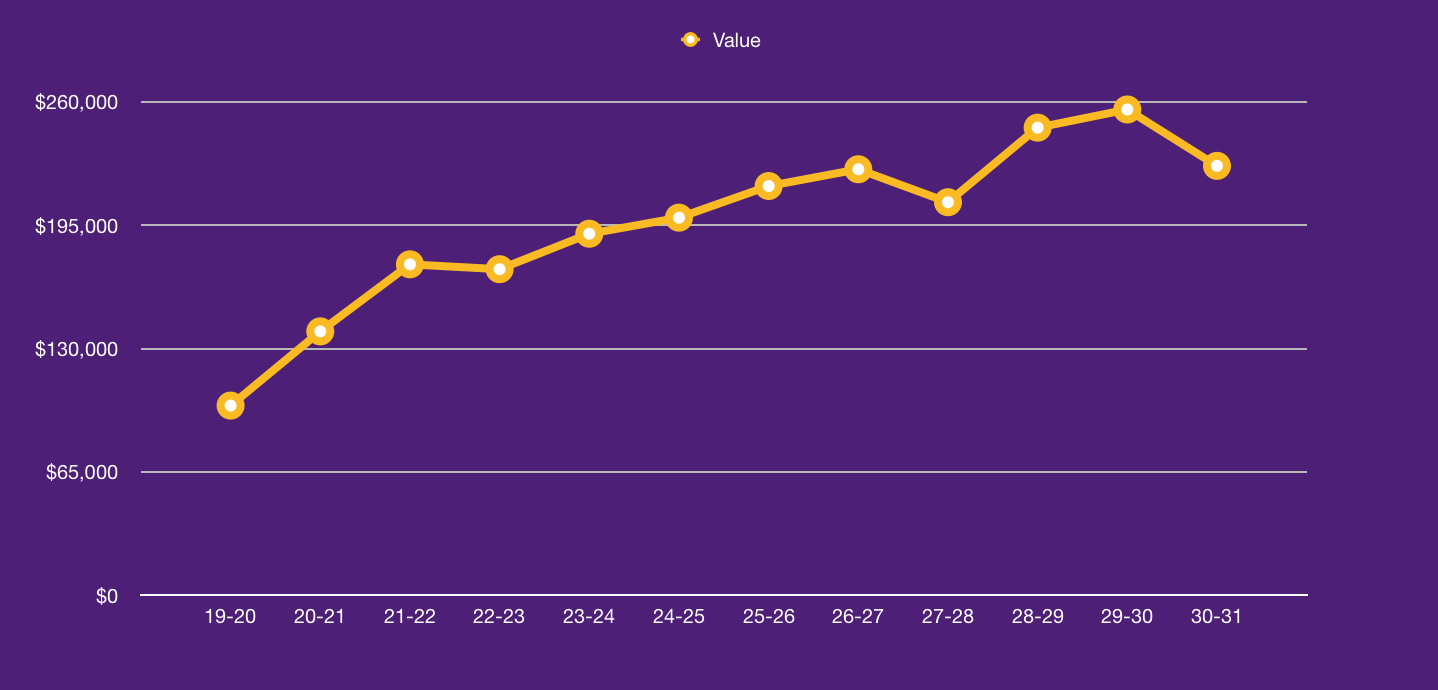Determining Player Contracts Based on Player Values Over Time

Estimating how much to pay a player on their contract can often be a difficult exercise. There’s perceived value on the club’s side and the player’s side, but then there’s an actual value. I wrote an article about how to determine a player’s value, which can be read here. But now that we know their value from one season, what about their value after we sign them? Here’s where it gets tricky and there are plenty of aspects to consider.
If you get one thing out of this article it’s that players’ performances, and therefore value, fluctuate for a variety of reasons. There may be problems at home, at the club, adjusting to new teammates, or any other reason to account for performance dips. Conversely, everything may be perfect and they may be improving their technique, and game understanding, which will make their performances go up as a result. However, surely there’s an average, which combines good and bad performances, to give us an overall picture of a player’s value over the course of a career. Well, luckily for you, I’ve done that.
Before I dive into the graphic below I want to quickly explain how I made it. What I did was collect Player Values for the same players, when playing within the same league, over 2 seasons. Then, we can find the difference between the two values for that same player.
So let’s say, in one year a Player’s Value is $100k, and the next year is $120k, the difference is 20%. From there, I took the differences across different ages and combined them together to create a whole picture. It’s also worth noting each data point has a minimum collective analyses of 70 players. It’s not ideal, but it’s a start and I’ll continue to add to it over time. That being said, some data points have over 100 players analyzed, due to how often players within age groups get played in the world. Now that we know all of that, let’s take a look at the graphic.

The graphic is a representation of a player’s projected value, if that player just turned 20 years old and just completed a season at a Value of $100k. Immediately you can see a few things:
Here are a few things to think about:
- A player has a growth period, at varying rates, from 20 to around 26
- The majority of that growth happens from 20 to 24
- Although, half of the growth is finished at 22
- After 28, they tend to stagnate or decline in performances and Value
With these things in mind, you can start using this as a tool for when signing players at a certain age.
For example, let’s say you sign a player who’s just turned 27 and had a season with the Value of $75,000.
Based on the graph, I’d say they have three years left playing at that level and there’s little growth. You may get that last kick it shows in the graph, but I'm more conservative so I tend to lean on the side of that won't happen. I tend to think that the kick is due to a bias of seasonsed veterans playing at that age. Therefore, they can consistently play at that level and do even better, from a Value perspective, if given more minutes. But again, it's possible so you should take that into consideration when offering their wage. I’m expecting their performances to fluctuate but maintain a decent level of their original $75,000 Value, I’d probably offer $68,000, per year, over three years. Or, you could offer $65,000 in year 1, $70,000 in year 2 if they hit certain performance thresholds, and again $75,000 in year 3 if they hit those thresholds again. In short, there are plenty of options.
Another example is if you did just sign that player who’s 20 and performed at the $100,000 Value. The best thing to do may be to hold onto them until at least 22, when a good portion of their growth is finished to see if there are any suiters. Or wait until they're 24 and see if there are suiters again when they've grown even further. Then, when they play well and there are plenty of suitors, sell the player so they can go onto bigger and better things.
I hope this helps paint a good picture of how tracking performances over time can influence what types of contracts to give players or even how to handle your player assets.
If you’d like a more thorough analysis, along with other analyses, for your club, league, or organization, please get in touch.
I encourage you to check out my consulting page, here.
